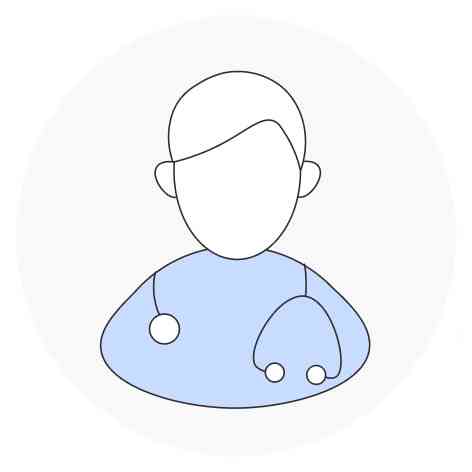Spinal Stenosis
Discover advanced Spinal Stenosis surgery solutions to relieve pain and restore comfort. Our expert team specializes in minimally invasive procedures, ensuring effective treatment for corns and related foot conditions to improve your quality of life.

30k+
Surgeries Done
50k+
Departments Treated
150k+
Conditions Treated
3k+
Specialist Doctors
200+
Cities
Spinal Stenosis Introduction
Spinal stenosis, a debilitating condition, occurs when the spinal canal becomes narrowed, causing compression of the spinal cord and nerves. This compression leads to a range of symptoms including numbness, weakness, loss of coordination, and tingling sensations in the arms or legs. The management of lumbar spinal stenosis (LSS) necessitates a collaborative effort involving various healthcare professionals. This interprofessional team typically comprises primary care physicians, radiologists, spinal surgeons, neurologists, neurosurgeons, pain specialists, pharmacists, physical therapists, psychologists, and nurses. Effective communication and close collaboration among these team members are critical to delivering comprehensive care and achieving optimal patient outcomes.
Why MediBuddy For Health Care

Enhanced Quality of Care
Constant support, a network of premium hospitals and top-tier surgeons.

End-to-End Management
Your only focus should be to go and get your procedure done. Leave the rest to us.

Continuous Guidance
Any problem you may face resolved with one phone call.

Easy financing support
We bring you the best deals, EMI options without compromising on quality
Meet Our Doctors

Dr J K Giriraj Harshavardhan
Orthopedics
22 Years

Dr Aravind Rajagopalan
Orthopedics
30 Years

Dr Sudhakar T
Orthopedics
22 Years
Types Of Spinal Stenosis
Types of Spinal Stenosis: - Cervical Spinal Stenosis: This type of spinal stenosis occurs in the neck area. It is characterized by the narrowing of the spinal canal in the cervical region, which can put pressure on the spinal cord and nerve roots. - Lumbar Spinal Stenosis: Lumbar spinal stenosis affects the lower back, specifically the lumbar region. It involves the narrowing of the spinal canal in the lower back, leading to compression of the spinal cord and nerves in that area. - Coexistence of Types: It is possible for an individual to have both cervical and lumbar spinal stenosis simultaneously. This dual occurrence can present unique challenges and symptoms for the individual affected.
Diagnosis Of Spinal Stenosis
To diagnose spinal stenosis, healthcare providers utilize a variety of tools and techniques. These include: - Gathering medical and family history to understand underlying factors that may contribute to the condition. - Conducting thorough physical examinations to assess symptoms and determine the presence of spinal stenosis. - Performing imaging tests such as X-rays, MRI scans, and CT scans to visualize the spine and identify potential areas of stenosis. - Neuroimaging is recommended when red-flag symptoms, lumbosacral radiculopathy, or spinal stenosis is suspected, with plain X-ray, CT, and MRI commonly used for diagnostic purposes. - Differential diagnosis of lumbar spinal stenosis (LSS) involves considering other conditions like vascular claudication, peripheral neuropathy, lumbar spondylosis, lumbar plexopathies, hip or knee osteoarthritis, and metabolic neuropathies. By combining these diagnostic methods and considerations, healthcare professionals can accurately diagnose spinal stenosis and develop appropriate treatment plans to manage the condition effectively.
Treatment Options For Spinal Stenosis
Treatment options for Spinal Stenosis include various surgical procedures aimed at relieving the compression of the spinal cord and nerves. The choice of treatment depends on the specific characteristics of the stenosis and the overall health of the patient. Here are some common treatment options: - Anterior Disc Replacement: This procedure is useful for treating central canal and/or foraminal stenosis. It can be performed as a day surgery procedure and has a high success rate. - Anterior Cervical Discectomy and Fusion (ACDF): Preferred for severe arthritis involving facet joints, this procedure is generally successful and enables a rapid return to normal activities. - Posterior Foraminotomy: Indicated for stenosis caused by a herniated disc or bone spur, this surgery is also performed as a day surgery procedure and boasts a success rate of over 90%. - Posterior Laminoplasty: Reserved for multilevel stenosis and spinal cord compression, this procedure yields positive results when performed with proper indications. - Posterior Laminectomy and Fusion: This surgery involves removing vertebral bone to alleviate nerve compression. It is typically recommended for severe stenosis, deformity, trauma, or tumors affecting multiple levels of the spine.
Surgical Procedures For Spinal Stenosis
Surgical procedures for Spinal Stenosis: - Surgical intervention may be necessary for severe cases of spinal stenosis that do not respond to conservative treatments. - The main goal of surgery for spinal stenosis is to relieve pressure on the spinal cord or nerves. - Common surgical procedures for spinal stenosis include decompressive laminectomy, laminotomy, foraminotomy, and spinal fusion. - Decompressive laminectomy involves removing a portion of the lamina (bony arch) to create more space for the spinal cord and nerves. - Laminotomy is a less invasive procedure that removes only a small portion of the lamina. - Foraminotomy is performed to widen the neural foramen (bony opening) where the spinal nerves exit the spinal canal. - Spinal fusion may be recommended in cases where there is instability in the spine after decompression surgery. It involves joining two or more vertebrae together using bone grafts or hardware to stabilize the spine. - It is important to discuss the risks and benefits of each surgical option with a healthcare provider before deciding on the most suitable treatment approach for spinal stenosis.
FAQ
What is spinal stenosis?
Spinal stenosis is a condition where the spinal canal becomes narrowed, leading to compression of the spinal cord and nerves.
What are the types of spinal stenosis?
How is spinal stenosis diagnosed?
Terms & Conditions
Privacy Policy




